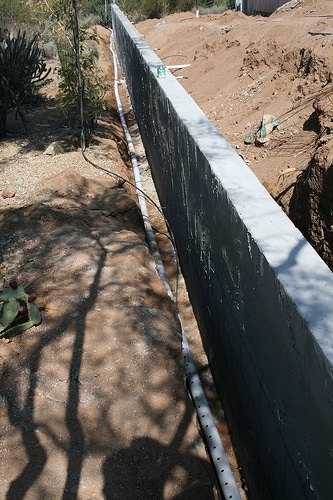This article will cover how French drains can help your drain field lines. A large company can only be successful if it is helped by the right people. Consumers, advertisers, suppliers, and the press all work together in making sure that the company’s message is understood and welcomed by the public. The same cooperation is expected in any organized group—living or non-living. A very good example is your septic system. Your entire property will not function efficiently if there is no septic system to ensure its sanitation and cleanliness. Because of the septic system, the inhabitants of your home and the surrounding area are separated from the toxic and pathogenic substances that raw wastewater contains. The septic system is made up of the septic tank and the drain field, which has the drain field lines. To help the water load of the septic system on a daily basis, a French drain or a soak away need to be installed. Knowing how French drains can help your drain field lines will allow you to work harder in maintaining your septic system.
French drains are simple structures that are basically long and narrow. They are trenches that are composed of aggregates in between layers of geotextile. It also has durable media to enhance the filtration process of the effluent that passes through it. The pre-treated effluent from the septic tank enters the French drain in a gradual flowing motion. The flow is influenced by the push of the incoming effluent and the gravitational pull of the surrounding soil. The effluent stagnates or stops for a while, giving the anaerobic bacteria to do their job a little bit more in the French drain. As the pre-treated effluent flows forward along the length of the drain, bacteria here still help degrade the organic waste materials. The pre-treated effluent then goes through the geotextile, towards the durable media that contains slime. The bacterial slime further degrade the organic particles left in the effluent. The clean water is then distributed into the surrounding soil to be filtered further by the latent bacteria present there. The resulting clean water by this time is assimilated into the water table as clear and potable.
The efficiency of French drains depends on the porosity or percolation rate, the clay content, particle size, and the location of the soil. If your property doesn’t have the ideal conditions for a French drain and you still insist on having one built for your cesspool, a high level of toxicity will happen. The effluent will not be effectively treated by the bacteria anymore. Ultimately, there will be no clean water at all. The effluent will have the same amount of pathogens and toxins that it had in the septic tank. You should talk to your septic expert to determine if your drain field should have a French drain.
You should help reduce the water load that enters the septic tank so that your French drains can help your drain field more. Below are some of the ways you can do this in your own home:
- Invest on water-saving toilet flushers, showerheads, and sink aerators.
- Never use your washing machine and dishwasher at the same time. As much as possible, distribute the laundry loads throughout the entire week.
- Do not let the water run from your faucets when you wash your vegetables, brush your teeth, wash your dishes, or shave.
- Make sure that the sludge in the tank is regularly pumped out as well. The sludge adds to the capacity of the septic tank and increases the water load volume.
- Keep cold water in the fridge to prevent you from always turning on the faucet for water.
- See to it that your household doesn’t use the tubs or the garbage disposal units that much. This adds to the volume of water in the septic tank.
French drains will always be helpful to your drain field as long as the soil requirements are met. As a homeowner, talk with your septic expert so you may have a full-functional drain field system.
